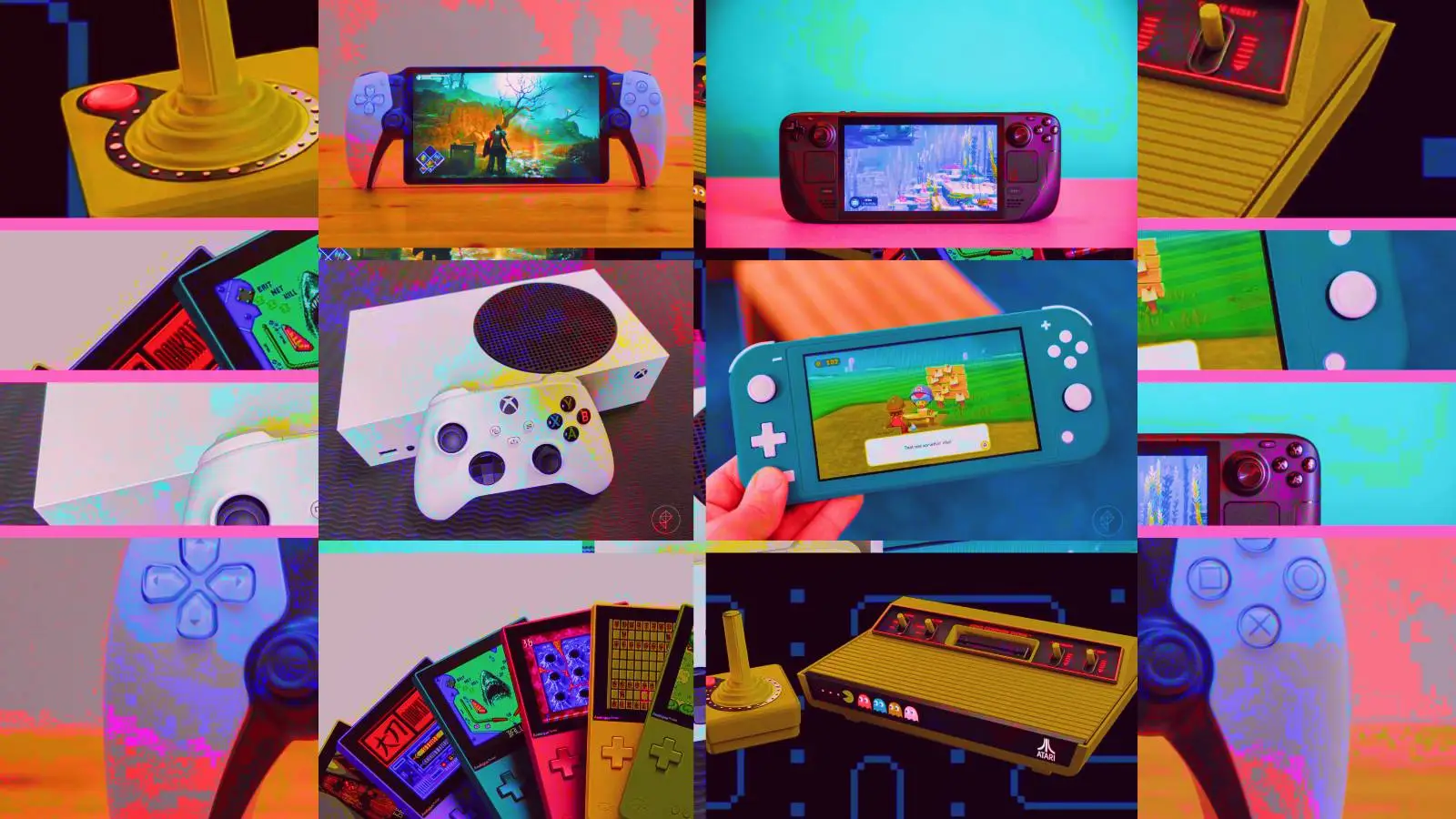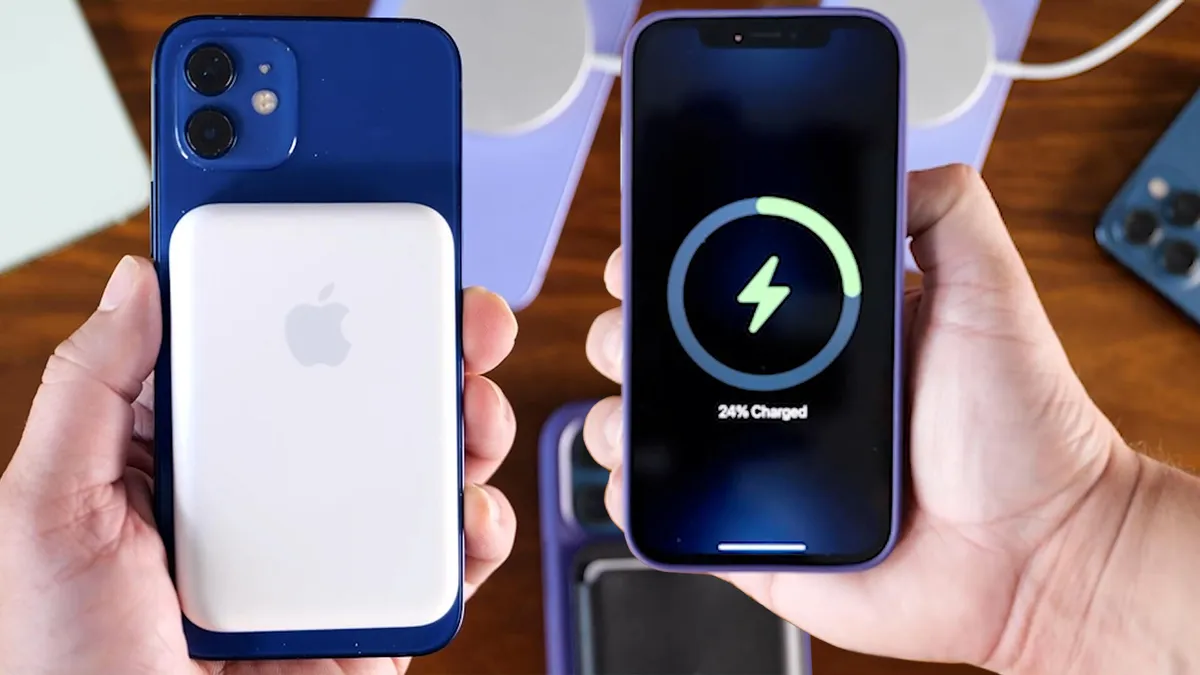Copyright Polygon

In November 2020, the eye-popping specs of the PlayStation 5 and Xbox Series X were the biggest story in video games. Loading screens would be a thing of the past, thanks to onboard solid-state drives; water would look wetter than ever before, thanks to ray-tracing; and photorealistic environments were waiting to be explored in glorious 4K. As they counted down the days until the launch of Cyberpunk 2077, hardcore types feverishly speculated about how Sony’s 10.3-teraflop console would stack up against Microsoft’s 12-teraflop monolith. Meanwhile, plenty more people seemed perfectly content to keep playing Among Us and Animal Crossing: New Horizons. The ninth generation of video game consoles kicked off with the usual celebration of bleeding-edge tech. But the last five years have also seen hardware-makers rapidly expand their focus to include cheaper hardware at lower price points, including cloud gaming services, handhelds, and even less-powerful consoles. While there are many overlapping reasons for this phenomenon, two big ones are the resurgence of handheld gaming and the transition from traditional console setups to gaming ecosystems. Some of the best surprises of this generation have emerged from looking backwards and sideways, instead of always and only forward. PlayStation As recently as December 2019, former PlayStation head Jim Ryan was telling press that handheld gaming was “a business that we’re no longer in.” It’s a statement that aged like fine milk. In the late 2010s, many industry insiders predicted that mobile phones would spell doom for handheld gaming, but thankfully, it didn’t turn out that way. Buoyed by a massive surge, thanks to the low-cost Switch Lite in 2019 and Animal Crossing: New Horizons in 2020, the Switch has continued to be a runaway success. By 2022, the Steam Deck had achieved the once-unthinkable, making the PC gaming experience fully portable. When PlayStation first revealed its Portal remote handheld in 2023, its goofy-lookin’ design sparked plenty of zingers, and it’s every bit as odd to look at in person. But for $200, it’s a great alternative to a dedicated handheld for those who have a sizable library of PS4 and PS5 games. (I have fond memories of soaking up the Hawaiian vibes of Like a Dragon: Infinite Wealth from beneath my duvet during an especially dreary January.) Better still, the Portal just got full Cloud Streaming support, meaning users no longer have to monopolize the PS5 console to play their games. You’ll need a PlayStation Plus Premium subscription to the tune of $17.99 per month, but given how much you could pay for a Switch 2, ROG Ally X, or Steam Deck, the Portal feels like a bargain in comparison. Maybe it’s still not the Vita 2 we were hoping for, but it’s a step in the right direction that seemed flat-out impossible in 2020. While the price of a PS5 console currently ranges from $500 for the digital-only to $750 for the PS5 Pro (disc drive sold separately!), Sony has also announced a region-locked, Japan-only PS5. It's priced at ¥55,000, or roughly $350, and can only be used for a Japanese PlayStation account. So the current-gen consoles are getting cheaper — but not here. Xbox Released alongside the top-spec Xbox Series X, the digital-only Xbox Series S uses a lot of the same components, but renders games in 1440p instead of 4K resolution. The dual hardware offering aimed to encourage a “softer” transition between generations, similar to the PC space. Backward compatibility has consistently been a major focus, with both consoles able to run players’ existing libraries of Xbox One and Xbox 360 games with improved performance and visuals. The Series S was also part of Microsoft’s strategy to expand its market share in Asia and Latin America, where it had historically lagged behind Sony and Nintendo. Microsoft’s mandate that games be available for both consoles has rankled some developers since launch — including Control’s Remedy Entertainment, Baldur’s Gate 3’s Larian Studios, and Black Myth: Wukong’s Game Science. These devs contend that optimizing for Series S poses a significant hurdle to porting games to Xbox. Even so, the requirement doesn’t seem to be going anywhere — back in January, Phil Spencer told former IGN staffer Dustin Legarie that targeting Series S makes it easier to port games to handheld consoles like the ROG Ally and Steam Deck. With Xbox now dipping into the handheld space and encouraging gamers to play on smart TVs and mobile devices — no console required — it’s not clear how a low-end console fits into the company’s strategy going forward. Still, I’ve always had a soft spot for the Series S. Unlike its 2020 console brethren, it is neither hideously ugly or impossible to hide inside a normal piece of furniture. It looks like a tasteful hot plate and easily meets the needs of most casual gamers. For several months in 2021, it was the only new-gen console you could actually find in a store, and you could often find it at Costco for a cool $250. (In 2025, it retails for $399.) Nintendo During the very same week that saw the launch of PS5 and Xbox Series X, Nintendo released a gloriously '80s pocket handheld with the original Super Mario Bros. to mark the 40th anniversary of the Game & Watch. It’s a tidy little encapsulation of the company’s pointed disinterest in selling players bleeding-edge technology just for the sake of it. Many of Nintendo’s greatest hardware successes (like the Game Boy and the Switch) adhere to the design philosophy of the late Gunpei Yokoi: “lateral thinking with withered technology.” In other words, it doesn’t need to be the most advanced thing on the market, but it does need to be fun. Launched in March 2017, the Nintendo Switch continued to dominate the console space even after the launch of Series X and PS5. The three-year-old console got a massive second wind due to the extraordinary popularity of Animal Crossing: New Horizons, which has sold more than 48 million copies since launch, as of August 2025. The handheld-only Switch Lite has an entry-level price of $229, the cheapest among the big three, and refurbished units can easily be found for $150 or less. Despite longstanding criticism of the “underpowered” console from spec-hounds, the original Switch has sold 154 million units as of September 2025, leaving it just 6 million units from displacing the PlayStation 2 as the best-selling game console of all time. The Switch 2 launched in June with Mario Kart World as its flagship launch title, and Donkey Kong Bananza debuted several weeks later. While those two games are Switch 2 exclusives, the vast majority of Switch games — including big sellers like The Legend of Zelda: Tears of the Kingdom and Pokémon Legends: Z-A — are playable on both Switch 1 and 2. With 4K visuals and expanded processing powers, Nintendo’s newest console feels more like a “Switch Pro” than a true successor. At $449, it’s the company’s most expensive console ever, but it’s also not a compulsory upgrade for most players. With the Switch 2, Nintendo did the opposite of what we’ve seen from PlayStation and Xbox this generation, expanding its offering to a more “hardcore” audience. Even so, Nintendo has been doing the multiple SKUs thing for decades now, with enormous success — remember all those Game Boy and 3DS iterations? Everyone else The pandemic was a time for many people to rediscover past loves and develop fun new hobbies, whether that be old movies, gardening, sourdough-starting, or video games. Continuing a trend from the 2010s, remakes and remasters have been a booming business, and there’s also been a resurgence of hardware that allows players to play older games natively, like Analogue’s range of consoles that run the gamut from the NES and Genesis to the Game Boy, Turbografix-16, and N64. The $219 Analogue Pocket has been a particular favorite of retro enthusiasts, given its slick handheld form-factor and versatility — it can play a huge variety of older, cartridge-based games, from the entire Game Boy / Color / Advance lineup to the Sega Game Gear, Atari Lynx, and even the Neo Geo Pocket Color. While it’s still a relatively niche piece of hardware with a little more than 4 million units sold, Valve’s Steam Deck has had an outsized influence on shaping players’ expectations for a handheld gaming experience since its 2022 launch. While a Steam Deck can’t offer the same top-end visuals as a dedicated desktop PC, it’s far simpler to set up and comparatively inexpensive. Earlier this year, Xbox launched its own riff on the handheld PC in partnership with ROG, the Xbox Ally X. But with a top-end price point of $1,000 compared to the Steam Deck OLED’s $649, it’s hard to see the Ally X as an affordable alternative.



